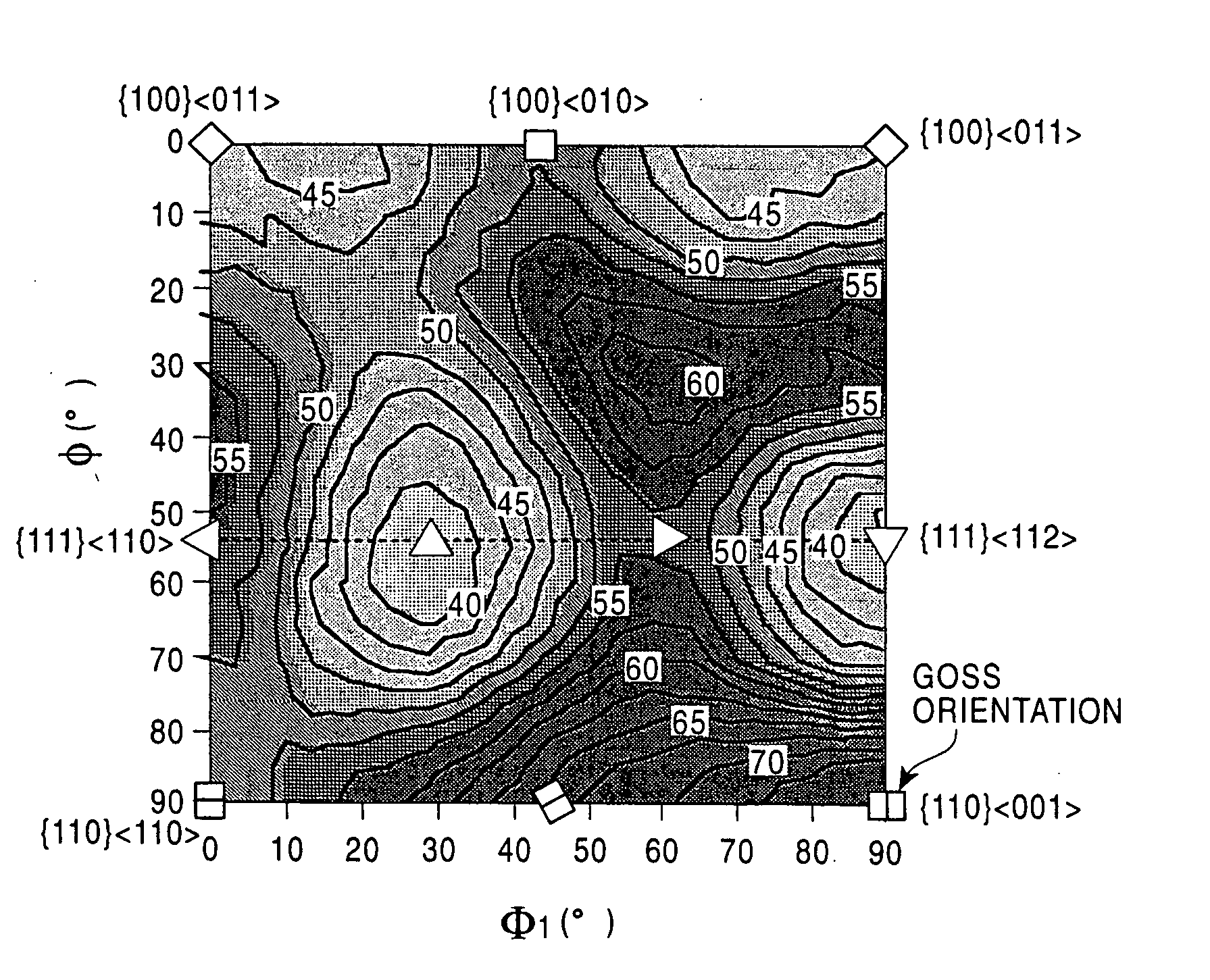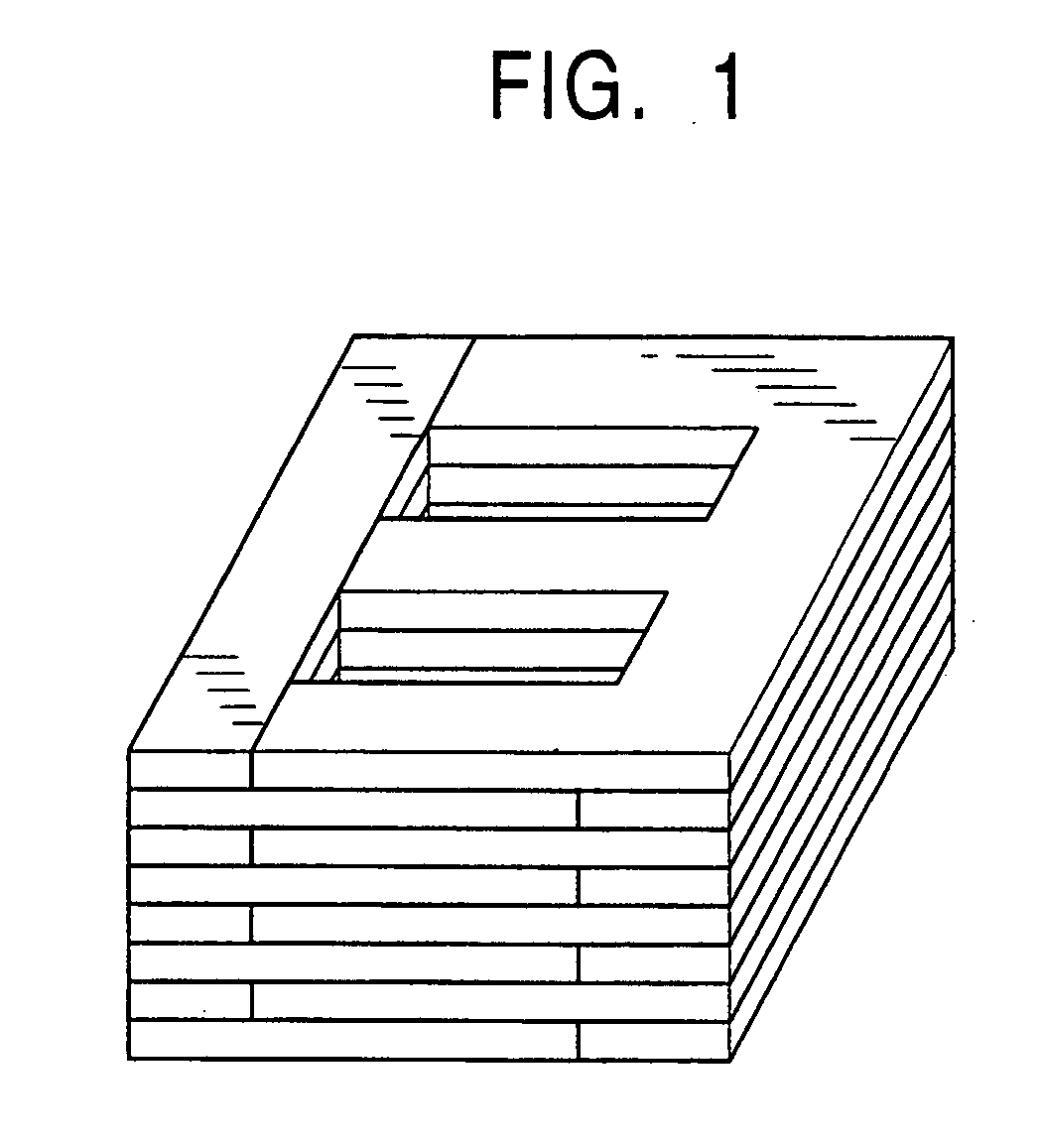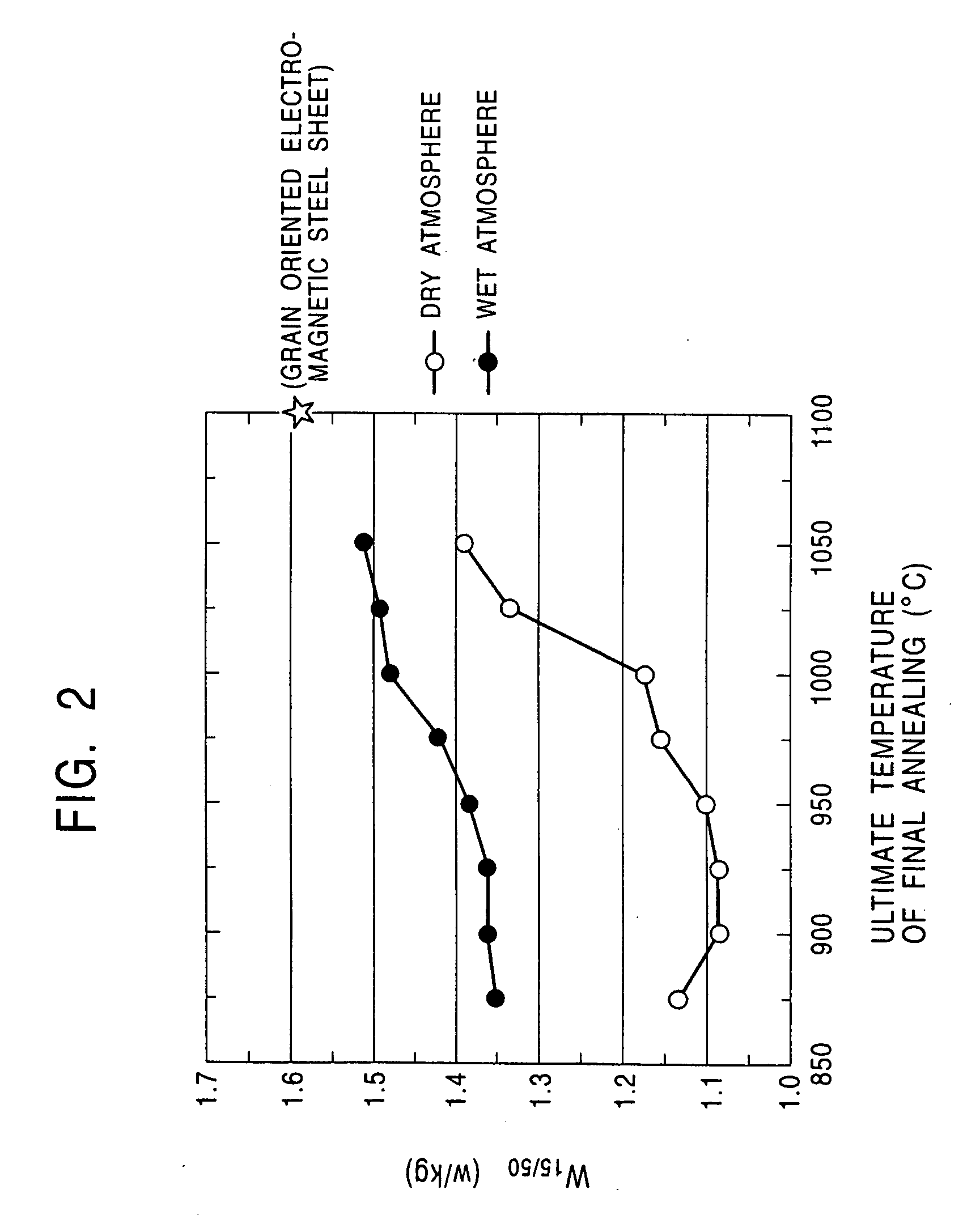Grain-oriented magnetic steel sheet having no undercoat film comprising forsterite as primary component and having good magnetic characteristics
a technology of magnetic steel sheet and primary component, which is applied in the direction of magnetic materials, inorganic material magnetism, magnetic bodies, etc., can solve the problems of deterioration in the working efficiency of core processing by users, affecting the quality of punching, and affecting the punching quality, so as to improve the working efficiency of core processing and improve the working efficiency. , the effect of high magnetic flux density
- Summary
- Abstract
- Description
- Claims
- Application Information
AI Technical Summary
Benefits of technology
Problems solved by technology
Method used
Image
Examples
first embodiment
(Limitation and Preferred Range)
[0134] A description will now be made of the reasons for limiting the features of the first embodiment of the present invention.
[0135] First, the grain oriented electromagnetic steel sheet of the first embodiment of the present invention must contain as a component, by % by mass, 1.0 to 8.0% of, preferably 2.0 to 8.0% of, Si.
[0136] This is because with a Si content of less than 1.0%, the sufficient effect of improving the iron loss cannot be obtained, while with a Si content of over 8.0%, processability deteriorates. In order to obtain the excellent effect of improving the iron loss, the Si content is preferably in the range of 2.0% to 8.0%.
[0137] In order to secure processability, it is preferable to add 10 ppm or more of N. However, in order to avoid deterioration of the iron loss, the amount of N added is preferably 100 ppm or less.
[0138] In order to decrease the iron loss of the steel sheet of the present invention, secondary recrystallized gr...
second embodiment
(Limitation and Preferred Range)
[0226] Next, the reasons for limiting the features of the second embodiment will be described.
[0227] First, the grain oriented electromagnetic steel sheet of the second embodiment of the present invention must contain as a component, by % by mass, 1.0 to 8.0% of, preferably 2.0 to 8.0% of, Si.
[0228] Like in the first embodiment, this is because with a Si content of less than 1.0%, the sufficient effect of improving the iron loss cannot be obtained, while with a Si content of over 8.0%, processability deteriorates. In order to obtain the excellent effect of improving the iron loss, the Si content is preferably in the range of 2.0% to 8.0%.
[0229] For the same reason as the steel sheet of the first embodiment, in order to decrease the iron loss, the secondary recrystallized grains must contain fine crystal grains having a grain diameter of 0.15 mm to 0.50 mm at a rate of 2 grains / cm2 or more, preferably 50 grains / cm2 or more. From the viewpoint of an ...
third embodiment
(Limitation and Preferred Range)
[0296] The reasons for limiting the features of the third embodiment of the present invention will be described.
[0297] First, the electromagnetic steel sheet of the present invention must contain as a component, by % by mass, 1.0 to 8.0% of, preferably 2.0 to 8.0% of, Si.
[0298] Like in the first embodiment, this is because with a Si content of less than 1.0%, the sufficient effect of improving the iron loss cannot be obtained, while with a Si content of over 8.0%, processability deteriorates. In order to obtain the excellent effect of improving the iron loss, the Si content is preferably in the range of 2.0% to 8.0%.
[0299] Furthermore, it is necessary that the grain diameter of the secondary recrystallized grains on the surface of the steel sheet, which is measured except fine grains having a grain diameter of 1 mm or less, is 5 mm or more. This is because when the secondary recrystallized grains have a grain diameter of less than 5 mm, the area ra...
PUM
| Property | Measurement | Unit |
|---|---|---|
| grain diameter | aaaaa | aaaaa |
| diameter | aaaaa | aaaaa |
| diameter | aaaaa | aaaaa |
Abstract
Description
Claims
Application Information
 Login to View More
Login to View More - R&D
- Intellectual Property
- Life Sciences
- Materials
- Tech Scout
- Unparalleled Data Quality
- Higher Quality Content
- 60% Fewer Hallucinations
Browse by: Latest US Patents, China's latest patents, Technical Efficacy Thesaurus, Application Domain, Technology Topic, Popular Technical Reports.
© 2025 PatSnap. All rights reserved.Legal|Privacy policy|Modern Slavery Act Transparency Statement|Sitemap|About US| Contact US: help@patsnap.com



